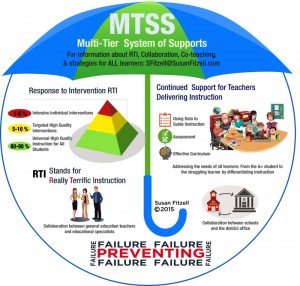
Several years ago, when I was co-teaching Science, I found that the reading level of the textbooks was far above the reading level of many students in the classroom. In order to provide materials that covered the content being presented at a reading level that supported all students, I worked with our high school librarian to obtain non-fiction books at a variety of reading levels on the unit we were teaching.
For example, when we were studying the solar system, I was able to obtain picture books on that topic, as well as books at the college level. I’d make these books available to students in the classroom for their use as supplemental reading, or background material for projects. I was always amazed at who picked up which books. At times, honors students would choose a picture book to read and students with special needs chose a college level text. The students seemed to use a variety of the books regardless of their reading level.
Consequently, I’ve always been a believer in providing books at all reading levels, including picture books, as supplemental reading for secondary students. While at first thought, picture books may seem too elementary for high school students, it’s amazing how many students – after they make their wisecracks – actually dig in and enjoy working with the picture books; they are an “easy” focus.
Furthermore, starting with simple and easy books facilitates the acquisition of standards-based skills. The research cited below backs up the benefits of using picture books at the high school level as well as with English Language Learners in the secondary classroom.
Research Background
Picture books used in the upper-grade levels may improve student comprehension. In a study by Bridget Robinson at the University of North Carolina, High School students who studied literary terms with picture books were 72% more successful on a test of literary terms than those who studied with traditional means. Students found it easier to understand and recall literary terms when picture books were used as a teaching tool.
Picture books help students create mental models and help readers build schema. They are written at a reading level accessible to most readers with content varying to meet individual needs. They help students understand complex ideas and vocabulary. Consider that, although picture books typically are written for pre-K children, they are meant to be read aloud and therefore utilize high-level vocabulary. We are also finding more and more picture books with adult themes.
The shorter length of picture books permits students to practice their reading strategies and enhance their understanding of difficult content. Picture books allow teachers to “bring up issues, problems, and concerns without deluging students with facts and information.” Another advantage of the shorter length of picture books is that student reading and response is plausible within the brief class periods educators face in secondary schools.
For the English language learner, picture books provide a non-threatening tool with visual cues to support English language acquisition. In a research study focused on using picture books and literature-based instruction with High School ESL students, Nancy L. Hadaway and JaNae Mundy found that using picture books engaged students in the language learning process. Vocabulary increased and reading comprehension skills were evident through class discussion and writing about their reading experience through journaling, poetry, and research presentations.

Bring Susan to your campus!
Featured seminar – Response to Intervention (RTI) Strategies

